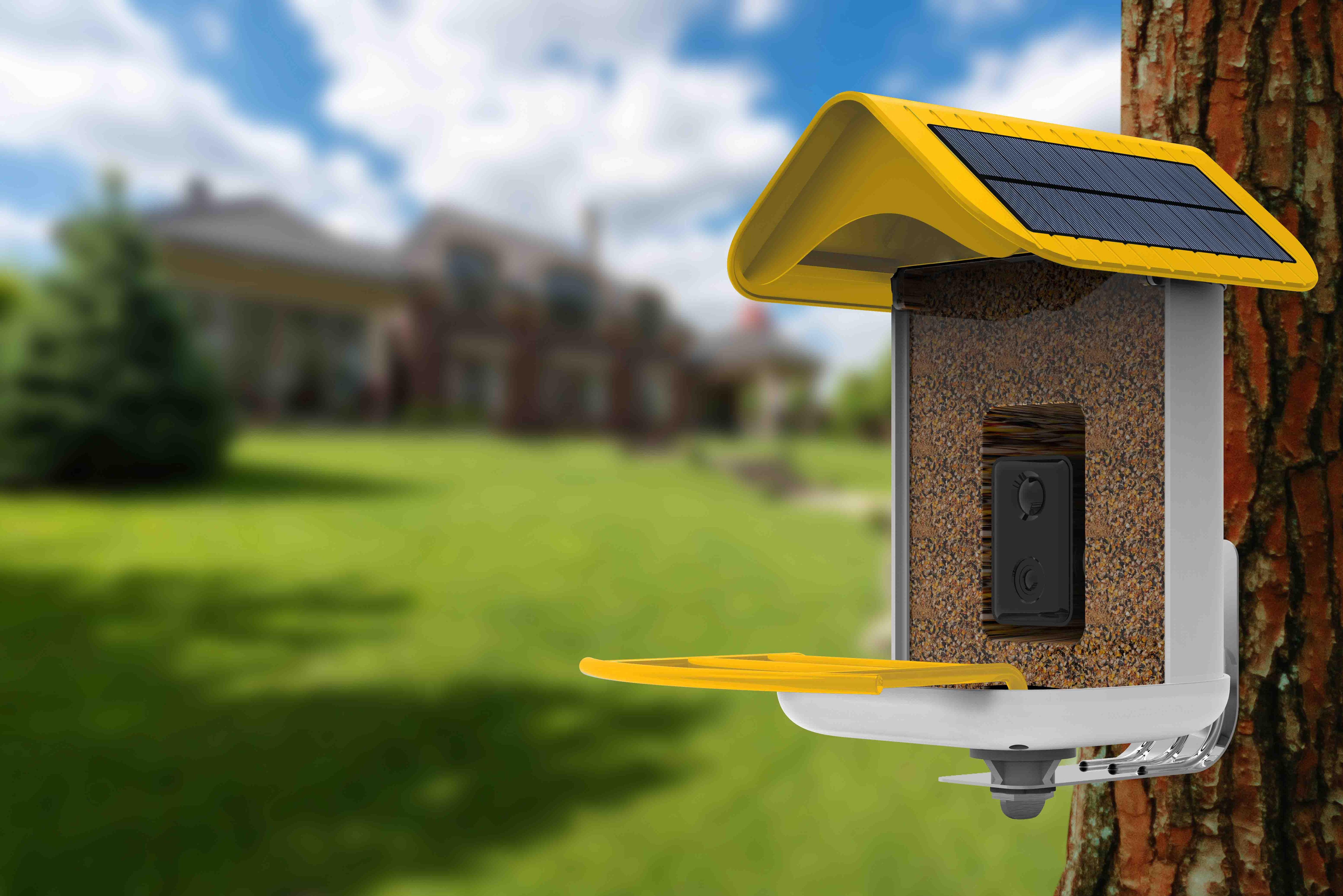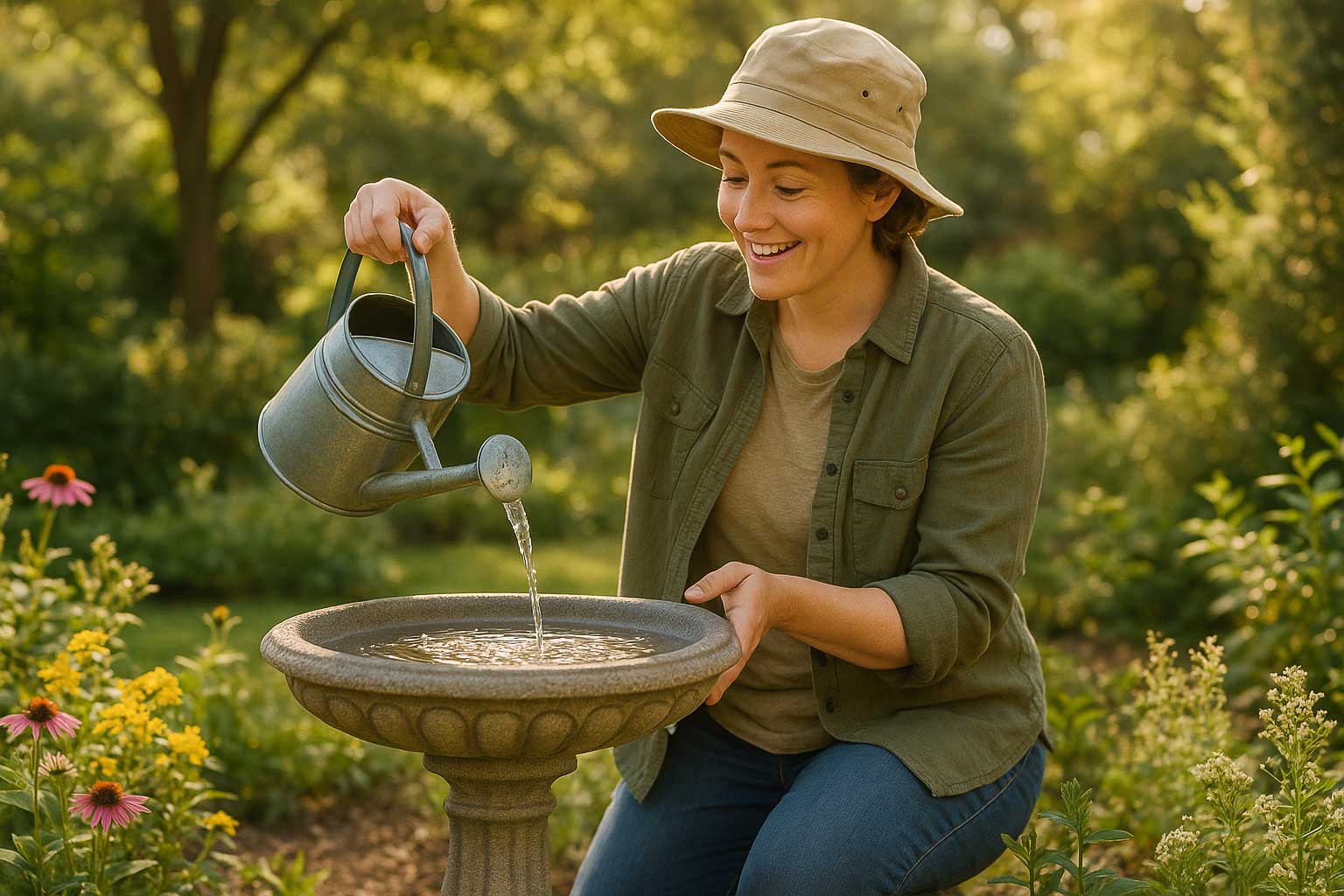Bird feeders are an excellent way to attract feathered visitors, but to truly support backyard birds, nothing beats native plants. Plants that naturally occur in your region provide food, shelter, and nesting areas — creating a sustainable habitat that keeps birds coming back year after year.
At Trail Optics, we believe smart birdwatching goes beyond feeders. Pairing native plants with our smart feeders creates a thriving ecosystem right in your backyard.

Why Native Plants Matter
Native plants are adapted to your local climate and soil, which makes them healthier and more resilient than non-native alternatives. For birds, this means:
- Natural food sources – seeds, berries, nectar, and insects.
- Shelter – dense shrubs and trees provide protection from predators.
- Nesting opportunities – plants offer ideal sites for building homes.
- Seasonal support – blooming cycles ensure food is available throughout the year.
Unlike ornamental or invasive plants, natives require less upkeep and give birds exactly what they need to thrive. Using a tool like Native Plant Finder to figure out what's best for the wild birds around you can be super helpful!
Native Plants by Region
Eastern U.S.
- Serviceberry (Amelanchier spp.) – Attracts robins, waxwings, and thrushes with its berries.
- Eastern Red Cedar – Provides cover and fruit for cedar waxwings and cardinals.
Midwest
- Purple Coneflower (Echinacea purpurea) – Produces seeds loved by finches.
- Prairie Blazing Star (Liatris pycnostachya) – Attracts butterflies and pollinators along with seed-eating birds.
Southern U.S.
- Coral Honeysuckle (Lonicera sempervirens) – Provides nectar for hummingbirds and berries for songbirds.
- American Beautyberry (Callicarpa americana) – Offers clusters of berries that feed mockingbirds, cardinals, and catbirds.
Western U.S.
- Manzanita (Arctostaphylos spp.) – Provides nectar, berries, and cover for many bird species.
- California Poppy (Eschscholzia californica) – Produces seeds eaten by finches and sparrows.

Tips for Creating a Bird-Friendly Garden
- Diversity is key: Plant a mix of trees, shrubs, and flowers to support different needs.
- Go pesticide-free: Chemicals harm the insects that birds rely on for protein.
- Add water sources: Birdbaths or small ponds enhance habitat value.
- Plant in layers: Combine tall trees, mid-level shrubs, and ground cover for year-round shelter and feeding.
Native Plants and Smart Feeders: A Perfect Match
While native plants provide food and shelter, feeders bring birds closer to you. Trail Optics smart bird feeders bridge the gap by:
- Allowing you to watch and record visitors that plants attract.
- Giving you real-time notifications when new species stop by.
- Combining technology with habitat to create a complete backyard birding experience.
Together, native plants and smart feeders turn your yard into a true sanctuary for wildlife.
Adding native plants to your backyard not only beautifies your space but also provides essential resources for birds. When paired with a Trail Optics smart feeder, your yard becomes a reliable, sustainable stop for a variety of species — season after season.



Leave a comment
This site is protected by hCaptcha and the hCaptcha Privacy Policy and Terms of Service apply.